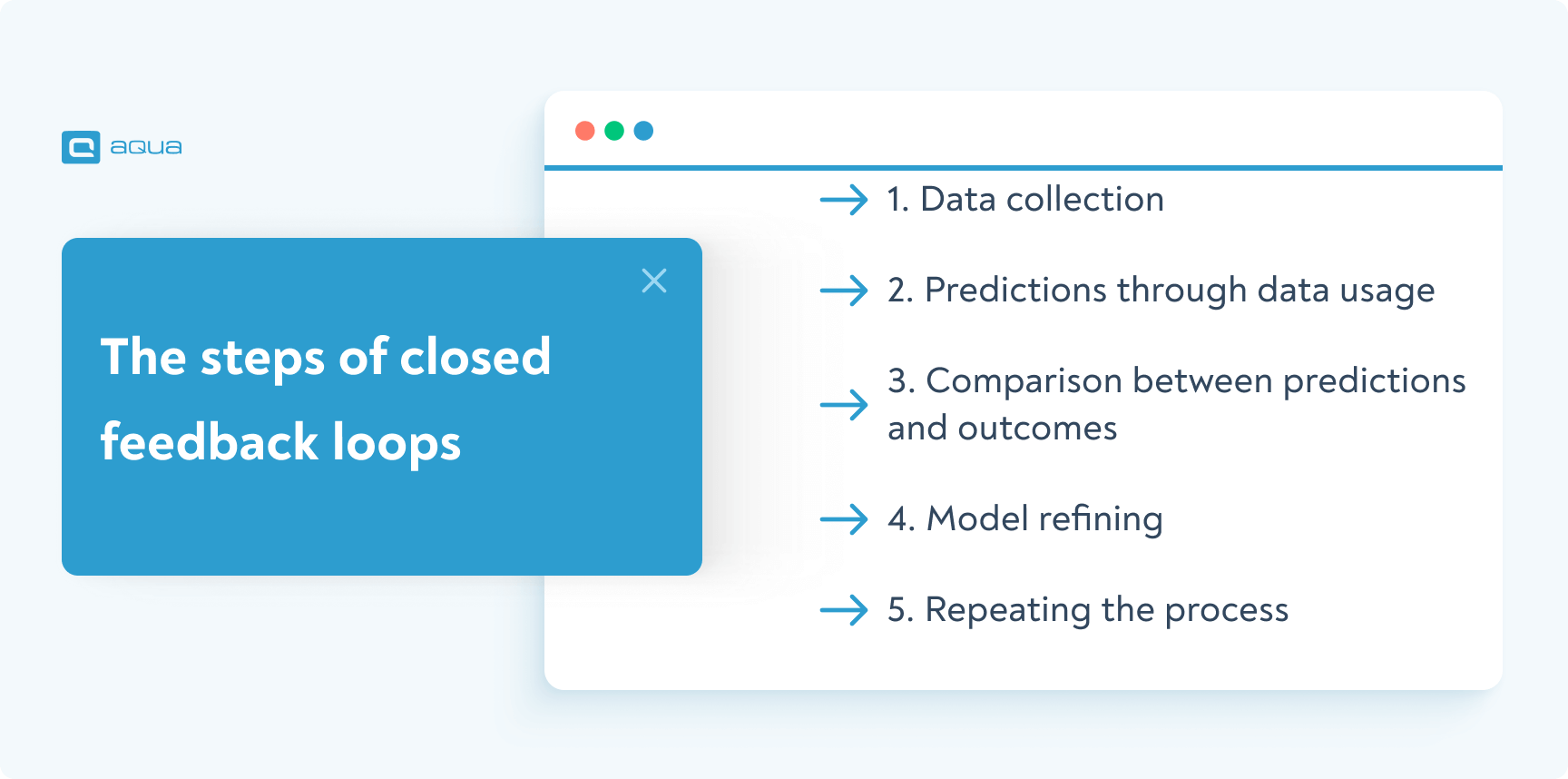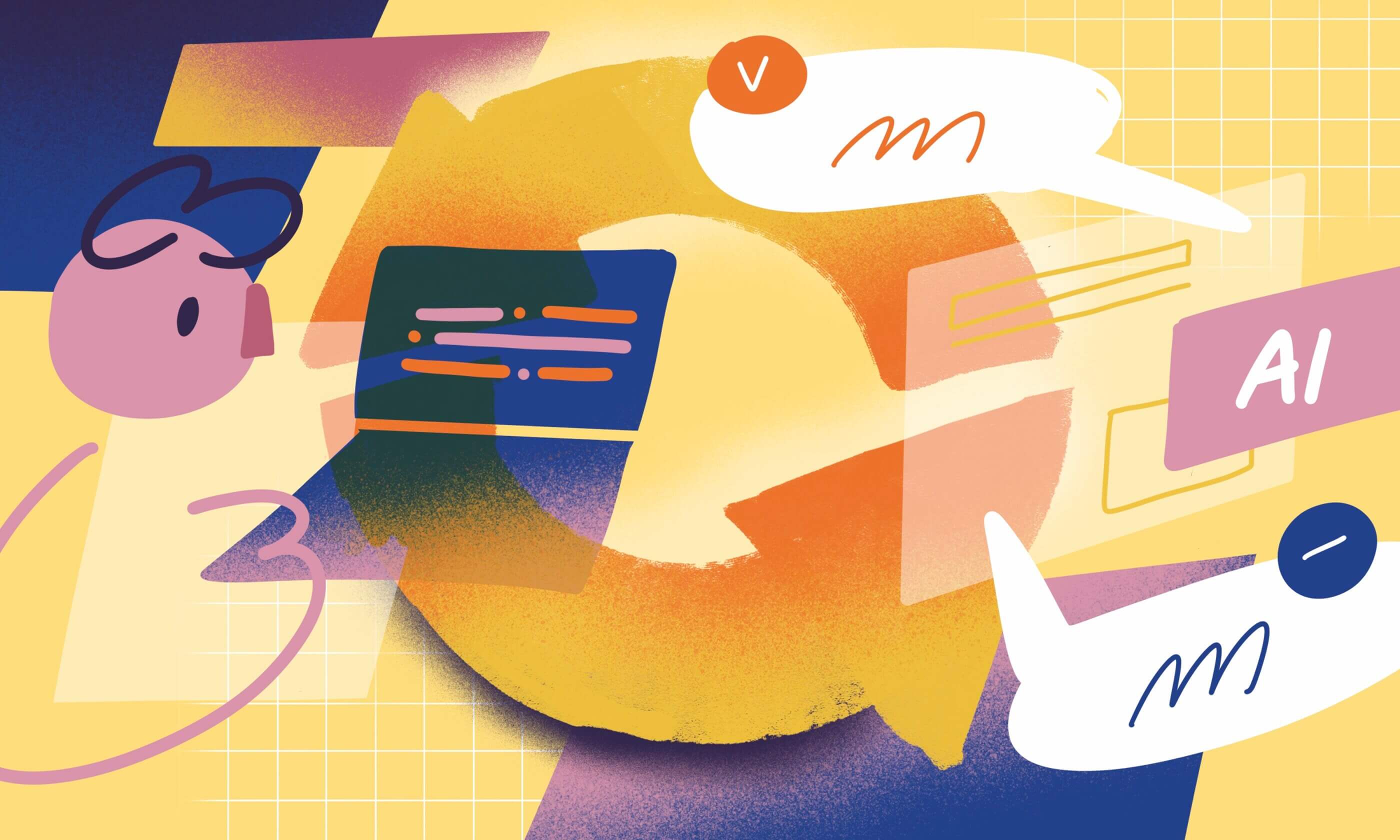What are the feedback loops?
Simply put, a feedback loop is the process of using the output of a system to refine and enhance its future performance. These loops are the engines behind AI testing’s evolution, enabling systems to learn from data, modify their approach, and refine their testing methods.
In AI-powered test automation, feedback loops are the pivotal mechanisms that drive continuous improvement. These loops operate as the backbone of learning and adaptation within the system.
Feedback loops are why AI testing systems don’t just follow programmed instructions but actively learn from their actions. They continually assess and upgrade Ai systems’ testing capabilities based on the insights gained from each testing iteration.
Effective feedback loops in AI testing differ between static, rule-based, and dynamic learning systems. They ensure that each test makes your system smarter, more efficient, and more reliable.
I think it's very important to have a feedback loop where you're constantly thinking about what you've done and how you could be doing it better. I think that's the best advice: constantly think about how you could be doing things better and question yourself.
The role of feedback loops in AI-powered test automation
First, understanding how AI transforms software testing helps you understand the pivotal role of feedback loops in this process.
AI-powered test automation revolutionises software testing using intelligent algorithms to create, maintain, and execute test scenarios, detect bugs, and assess software performance. Unlike traditional methods, AI-driven testing doesn’t just follow predefined steps; it learns, adapts, and improves over time.
Central to this system are machine learning algorithms that enable the testing process to learn from data and adjust its strategies automatically. This adaptability allows AI to handle complex scenarios and changing software landscapes effortlessly.
As mentioned above, feedback loops drive constant improvement in AI-powered testing. As the system runs tests, it gathers crucial data about its performance and the software being tested. This data is then used to analyse, optimise, and enhance future testing approaches. In simple terms, feedback loops let the system learn from its successes and failures. When a test finds a bug or a bottleneck, the feedback loop ensures the system learns from it. Similarly, successful tests contribute positively to the system’s learning process, making it more robust and efficient.
Feedback loops turn AI-powered test automation into an adaptive, self-improving system. They’re the key to transforming your testing strategy from rigid processes to Agile systems that continuously evolve to meet the ever-changing demands of software testing.
What also can help you transform your testing process is a powerful AI-powered TMS. How? Here is how a Test Management System can help enhance your feedback loops:
- Efficient Requirement Handling: A robust TMS streamlines how you handle requirements, ensuring clear objectives for your feedback loops as you quickly turn ideas into comprehensive documentation.
- Seamless Test Case Generation: Your TMS simplifies the generation of test cases from requirements, providing relevant and detailed data for more comprehensive analysis within your feedback loop.
- Adaptability to Changes: With the ability to adapt to your defined changes, TMS ensures that your testing strategies can be modified and refined as needed, keeping your feedback loop responsive to the evolving software landscape.
- Insights from AI-Enhanced Features: AI-driven features in your TMS, like chatbots, facilitate quick interaction, providing valuable insights and expediting the learning process for your feedback loop.
- Intelligent Test Prioritisation: Your TMS, equipped with AI capabilities, helps identify and prioritise tests based on historical data, ensuring your feedback loop focuses on the most critical tests and optimises overall efficiency.
Now, what if we told you there is a solution that does all this for you? Sounds incredible, doesn’t it? Here comes aqua cloud, the first test management solution using AI in the QA world.
With its full AI potential, aqua accelerates your testing by swiftly transforming your ideas into comprehensive documentation, expediting the initial development phases. Its capability to generate complete test cases from your requirements and adapt to your modifications through AI Copilot not only simplifies test creation but significantly reduces maintenance time. The AI-driven chatbot surpasses traditional tools, supporting your QA processes by offering suggestions, expediting test case creation, and delivering insights at a remarkable 10x faster rate than standard methods. aqua’s intelligent test prioritisation, guided by AI, optimises test execution by identifying critical tests, ultimately streamlining your testing process. Embracing aqua cloud’s AI-powered features isn’t just an upgrade; it’s a transformative step in your testing and automation journey, taking away the pain of testing and ensuring better feedback loops.
Save 12.8 hours per tester per week
Establishing effective feedback loops
Now that you know the role of AI in feedback loops in test automation, it is time to learn how to establish an effective process. Below is a step-by-step approach for mastering feedback loops:
1. Data Feedback Mechanism: First, you must implement a robust system for continuously collecting real-world data to adapt and train AI models. The richness and diversity of data enhance model generalisation and provide valuable insights for refining data collection strategies, establishing a cyclical process of improvement.
2. Adaptive Learning Approaches: Use online learning and reinforcement learning methods to enable AI models to adapt to evolving patterns and user behaviours. It’ll foster a dynamic feedback loop, where the model continuously learns from new information and refines its predictions, leading to sustained relevance.
3. Closed Feedback Loops: A closed-loop feedback system is a continuous cycle where the system collects data, uses it to make predictions, compares these predictions to real outcomes, incorporates the differences as feedback to refine the model, and then repeats the process. You should also implement this iterative loop to help the AI system adapt and improve its performance over time based on the continuous feedback it receives.

4. Culture of experimentation: Create a culture of experimentation and A/B testing. It will help you assess different model variations and systematically improve AI performance. This approach identifies optimal strategies and creates an adaptive feedback loop that drives AI systems forward in terms of innovations and enhancements.
If you implement this step-by-step approach, you will build a constant process where you improve your interaction with AI systems and algorithms. This guide will also help you overcome the common challenges you will face in feedback loops. Which challenges, you might say? Well, we kept it for the last.
Challenges of implementing feedback loops
In software testing, nothing is easy. Even with AI, as it is relatively new to the different QA processes, it is no surprise you will face them during feedback loop implementation too. Here are some of the common challenges you might encounter:
- Data Overload: Dealing with excess data can be challenging, as it may overwhelm your feedback loop and make it difficult to discern crucial insights. Balancing the quantity and quality of data becomes a key hurdle.
- Integration Complexity: Connecting your feedback loop seamlessly with various testing tools and systems can pose challenges. Navigating the integration complexities ensures the loop operates harmoniously within your testing environment.
- Adapting to Dynamic Environments: Feedback loops need to be Agile and adaptable to changes in software, user behaviour, or testing requirements. Ensuring that the loop remains effective in dynamic environments is an ongoing challenge.
- Ensuring Actionable Insights: Extracting actionable insights from the data collected by the feedback loop is pivotal. The challenge lies in interpreting the data effectively and translating it into meaningful actions for improvement.
- Collaboration Barriers: Encouraging collaboration among different teams involved in the testing process can be challenging. Breaking down communication barriers ensures that diverse perspectives contribute to the feedback loop.
- Resource Limitations: Constraints on time, budget, or personnel can impede the optimal functioning of feedback loops. Finding ways to maximise efficiency within resource limitations becomes a persistent challenge.
Sounds like a lot, right?
Now, what if there is an AI-powered solution that might help you with most of these challenges if not all of them?
Consider aqua cloud – the AI-powered TMS to boost your QA process. Its advanced analytics and processing capabilities make handling data overload a streamlined process, distilling meaningful insights from extensive datasets. Furthermore, aqua’s adaptability to user-defined changes ensures that testing strategies can be easily modified, addressing the challenge of responsiveness to the evolving software landscape. By providing relevant and detailed data through seamless test case generation from requirements, aqua cloud ensures actionable insights, a critical aspect of effective feedback loops. The AI-driven chatbot facilitates quick interaction, improving the learning process and breaking down collaboration barriers among different teams involved in testing. In essence, aqua cloud’s AI-powered features directly address these challenges, making it your powerful ally in the optimisation and effectiveness of feedback loops.
Elevate your feedback loops to maximum efficiency with an AI-powered solution
Conclusion
Now you know what feedback loops are, how crucial they are in the testing process, and how you can master them with a step-by-step guide. Although working with AI brings a lot of benefits, you also see that there are some inevitable challenges. Embracing these challenges and leveraging the power of feedback loops with AI-powered solutions like aqua cloud will undoubtedly contribute to a more robust and efficient testing ecosystem.


















